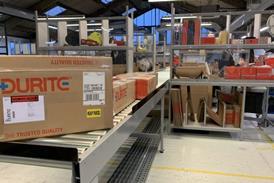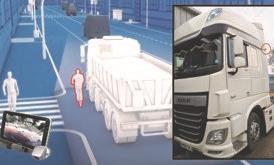The inevitable shift to electric vans and trucks is gaining momentum globally with government initiatives to prohibit or reduce sales of non-electric new vehicles, bolstered by incentives such as grants and tax benefits. This regulatory push is prompting delivery and fleet businesses to pivot towards electric alternatives over traditional petrol and diesel options.

Despite the steeper initial investment, the lower operational and maintenance costs of electric vehicles (EVs) are increasingly appealing to operators. So where are three leading markets—the UK, China, and the US— on the EV adoption curve?
Over the last year alone, the number of battery electric vans (BEVs) sold in the UK has picked up significantly and at the end of June 2024, there were over 60,000 electric vans on the road. Thanks to this increase in demand, especially in fleet registrations, more new models are now coming to market.
Battery technology advances offering better range on a single charge and faster charging times combined with the expansion of the UK’s charging infrastructure have made BEVs an ideal choice for commercial use. So much so that major logistics and delivery brands such as DHL, UPS and Amazon have all pledged to electrify their fleets.
As part of its broader sustainability initiative, Amazon began rolling out its electric delivery vans in the summer of 2022 and now has more than 15,000 across the US and more than 1,000 BEVs in the UK. Amazon has also made BEVs an addition to its European fleets, with the aim of replacing traditional diesel trucks altogether.W
Parcel delivery company Evri is establishing the UK’s largest electric cargo bike fleet with a £19m investment aimed at sustainability. The company plans to increase its fleet from 33 to 3,000 e-cargo bikes by 2033, aligning with its net-zero goal by 2035. Currently, Evri’s fleet includes 168 EVs, set to grow to 270 within a year, and it will deliver 1.5m parcels annually across cities like London and Bristol.
Significantly, Evri is expanding its own electric vehicle charging infrastructure with over £1m invested in upgrading its depot network and hubs. This expansion supports the introduction of 148 new EVs before Christmas this year and an additional 122 by spring 2025, replacing diesel vehicles to cut emissions.
Beyond sustainability initiatives, the shift to electric vans and trucks in delivery and logistics operations brings significant advantages such as cost savings and enhanced operational efficiency. For instance, the average cost per mile for operating a diesel van stands at approximately 19.2p, compared to just 8.5p for an electric van, translating to a substantial 77% saving. Such cost reduction is a crucial factor for operators when assessing the return on investment. Additionally, the dramatic increase in the use of public EV chargers, growing 264% year-on-year, further reflects the shift.
Fast-charging solutions and better battery management systems will improve the practicality of BEVs and, as more fleets become electric, a growing number of manufacturers will begin offering operators more options, designed to meet specific delivery logistic needs.The transition to BEVs isn’t limited to the UK; the US and China are also shifting their vans and trucks to electric, albeit at varying paces and scales between the two countries.
Driven by regulatory pressures, states like California have set ambitious targets for zero-emission vehicle sales and are offering incentives to encourage the adoption of electric vehicles. Nevertheless, the US faces challenges such as higher upfront costs and the need for more expansive charging infrastructure, which are significant barriers to widespread adoption. Additionally, the adoption rate varies across the country due to state-specific policies rather than federal mandates.
EV charging infrastructure has long been a bottleneck to faster EV development and adoption in the US, but the country is also at the forefront of innovation within the sector, including the first wireless electric road in the US in Detroit, allowing electric vehicles to charge up as they drive along. While the shift to electric vans and trucks is gaining momentum, BEV sales accounted for less than 7% of the total light vehicles sold in the US. Sales of BEVs increased by 70%, reaching nearly 800,000 in the US in 2022, but sales in that country still only make up around 12% of global growth.
To combat infrastructure woes, automotive manufacturers and energy firms are teaming up. Daimler Truck North America, NextEra Energy and BlackRock Alternatives have launched Greenlane, a $650m joint venture to create a US-wide zero-emission charging and hydrogen fueling network for commercial vehicles. Meanwhile, CBRE has partnered with Forum Mobility in a $400m project to build depot charging stations in California. Similarly, Pilot and Volvo, as well as Prologis and Maersk, are collaborating on expanding truck charging infrastructure, demonstrating significant investment in electrification to support greener transportation in the US.
China, on the other hand, is leading the global shift to electric cars, vans and trucks. It is one of only a few countries, including Germany, that have reached the 5% tipping point, where EV early adoption moves over to broader mainstream acceptance. BEV sales in China were 57% of the global total, followed by Europe with 23.8%. The Chinese government has enforced stringent emissions regulations and offers generous subsidies for electric vehicles, including commercial vans and trucks, which have expanded rapidly in China.
Several Chinese OEMs, such as BYD and Geely Auto Group, are at the forefront of producing electric vans and trucks, with a commitment to BEV technology evolution. This includes Geely’s cutting-edge battery management systems and thermal management technologies. China also dominates the global market in battery component production, holding between 85% and 95% of the production capacity for each major battery component, and about 70% of the world’s lithium refining capacity. China is also pursuing innovative technologies and strategies for EV charging, including aggregation of EVs in virtual power plants as well as bidirectional charging technologies. Those innovations and materials advailablity contribute to longer battery life and the country’s robust charging infrastructure and supportive policies, which are likely to sustain and accelerate China’s shift to electric fleets.
The UK, China, and the US are all advancing in the adoption of EVs, with the US progressing more slowly due to challenges like limited domestic supplies of essential battery materials such as lithium, cobalt and nickel. This reliance on foreign sources poses risks of supply chain disruptions. However, the growing consumer demand for BEVs and the development of faster-charging stations are encouraging signs that could make EVs more attractive for logistics companies. Meanwhile, the shift to electric vans and trucks continues but will require several years before the majority of fleets are fully electric.
Initially driven by early adopters and incentives, and supported by the introduction of various commercially suitable EV models, the transition is expected to accelerate as older vehicles are phased out, leading to a significant increase in electric fleets on the road.
Dunstan Power, MD, Versinetic



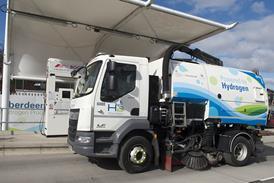


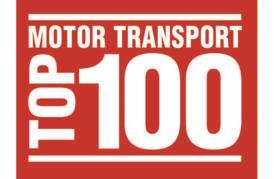
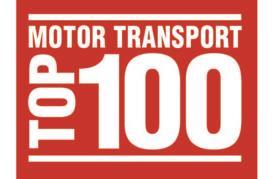
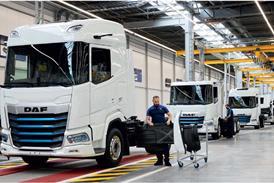
![Mercedes-Benz_eActros_600_(1)[1]](jpg/17820_mercedesbenz_eactros_600_11_978080.jpg)

